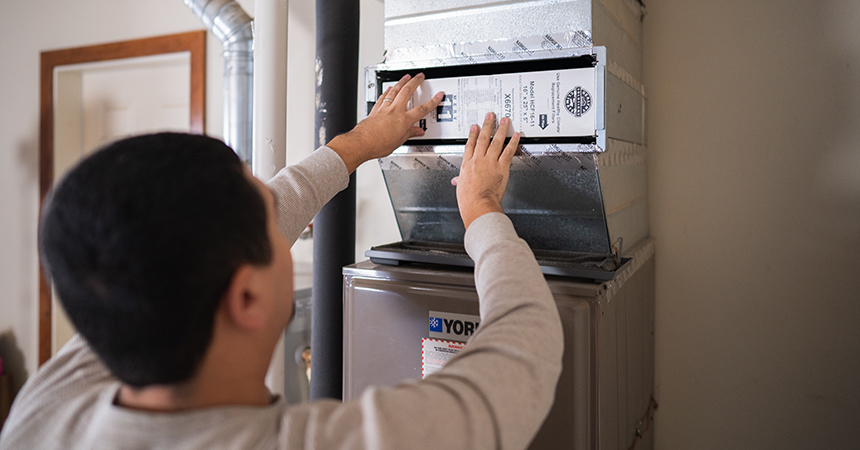
Oregon homeowners have an opportunity to maximize home improvement budgets with Energy Trust cash incentives and federal tax credits, but the clock is winding down on some of these savings.
Federal tax credits, like the Energy Efficient Home Improvement Credit, which covers 30% of eligible upgrades or up to $3,200, are expiring at the end of the year, so there are only a few months left to stack these funds on top of ongoing cash incentives from Energy Trust of Oregon to save more money on home energy upgrades. The Energy Efficient Home Improvement Credit can be used on updates to heat pumps, heat pump water heaters, windows, exterior doors and insulation.
Fall is a great time to explore energy-efficient upgrades. Learn how these improvements can help save money and energy, and what to consider when working with a professional.
Start with savings in mind
Each upgrade to your home’s energy efficiency can qualify for cash incentives from Energy Trust. Here are two key ways to save:
- Direct purchase – When buying home energy equipment or products at select retailers in Oregon, savings are built in. You can find these retailers on Energy Trust’s website, including those offering discounts on products like washers and dryers and smart thermostats.
- Rebates – After you complete an energy upgrade at home, fill out and submit an application online and, if approved, you’ll get a rebate check in the mail. Be sure to review Energy Trust of Oregon’s rebate eligibility requirements before moving forward with your project.
DIY 101: Routine home energy projects
If you’re a homeowner or renter, start with Energy Trust’s free online home assessment. In about 20 minutes, it can help you identify the best energy-saving changes to make around your house.
Here are some simple DIY projects that not only help improve your home’s energy efficiency, but also reduce your energy bills over time:
- Check your home heating and cooling systems and clean or replace air filters based on manufacturer recommendations. Remove any debris that accumulates near outdoor equipment and use a hose to gently rinse off dirt and dust from the unit’s coils if you have a ductless heat pump. If you have a furnace, routinely change your filter.
- Update your home’s lighting to more efficient bulbs. Installing LED lighting in frequently used areas like kitchens and bathrooms is not only a simple change you can make yourself but can also result in savings on your energy bills.
- Add weather stripping to drafty doors and windows or caulking around gaps and cracks (think ducts, pipes, exhaust fans and more) to prevent any air leakage and help maintain your home’s temperature while improving your home’s air quality.
- Most plumbers recommend that you drain and flush your water heater tank at least once a year. This removes sediment build-up that can damage the tank, while helping make it more efficient and can extend the life of your water heater. Step-by-step instructions are found here.
DIY 201: Bigger upgrades for the seasoned home energy DIYer
If you’re looking for a more efficient water heater, consider a heat pump water heater, also known as a hybrid water heater. Once installed, you’ll use two to three times less energy than standard electric water heaters. Step-by-step instructions are available in this video.
Through Energy Trust, you can get up to $700 in instant discounts on select models at participating retailers; the Energy Efficient Home Improvement federal tax credit covers an additional 30% of project costs up to $2,000.
Another DIY upgrade option is insulation, one of the easiest, most cost-effective ways to make your home more comfortable year-round. Heating and cooling are often the largest energy expense for homeowners, so by keeping warm air in during the winter or cool air in during the summer, you can easily cut your energy usage and bills. Here’s how you can get started:
- Figure out where you may need more insulation by doing a free online home energy assessment.
- If your home has drafty rooms, uneven temperatures and high energy bills, upgrading your attic insulation can help save energy and maintain temperatures throughout the home.
- If you have any unfinished areas where the walls are open or framing is exposed – like in a garage, crawlspace or attic – you can see if there is insulation in place. You can also contact a contractor if you’re wondering how much to install.
With Energy Trust’s incentives, you could save up to $2.25 per square foot on insulation, and the Energy Efficient Home Improvement federal tax credit can cover an additional 30% of project costs up to $1,200. Check out Energy Trust’s complete guidelines for insulation needs and steps online for upgrades that you can do yourself.
What other home upgrades can you save on
Some projects still require an expert installer. Energy Trust has a network of trusted trade ally contractors who can do the job and make sure you meet the requirements to get all the incentives and credits offered to make your home more energy efficient. Some of these upgrades include:
- Heat pumps: duct & ductless
- Central AC
- Natural gas furnace
- Natural gas water heater
- Windows
Check out Energy Trust’s cash incentives and DIY resources page for the full list of incentives you can access today!
